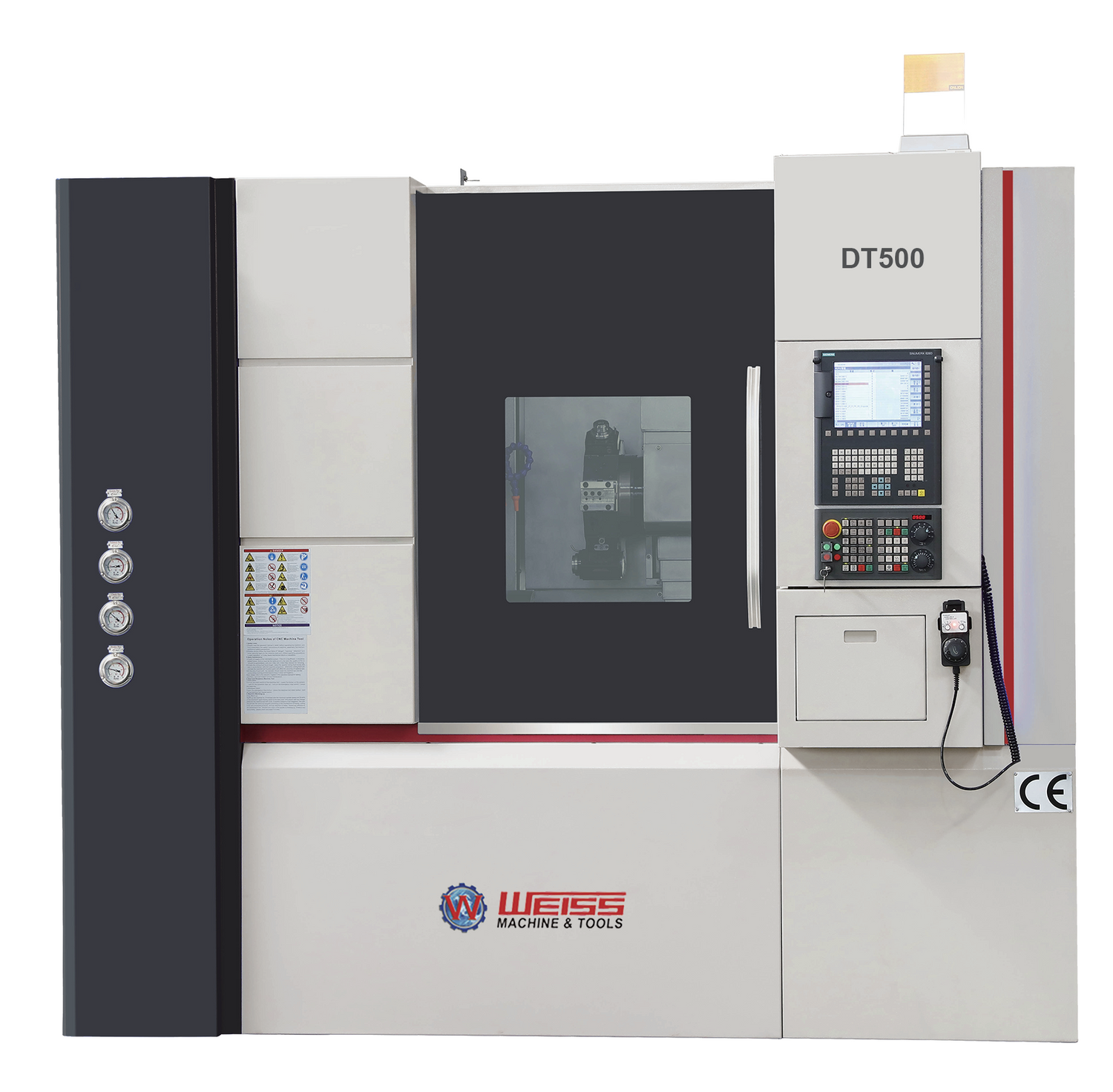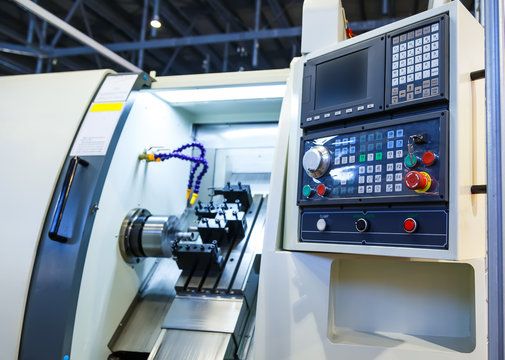
Get A Quote
What is G Code and M Code in CNC Turning Machine?
In the world of CNC (Computer Numerical Control) machining, G codes and M codes play a pivotal role in controlling the operations of turning machines. These codes are essentially the language that CNC machines understand, enabling precise control over machine movements and functions. Whether you're new to CNC machining or looking to deepen your knowledge, understanding G codes and M codes is fundamental to mastering CNC technology.
Understanding the Basics: What Are G Codes and M Codes?
G codes and M codes are programming languages used in CNC machining to control various aspects of the machine’s operation. These codes are input into the machine’s controller, dictating specific movements, functions, and sequences that the machine follows.
G Codes: The Movement Commands
G codes, also known as preparatory codes, primarily control the movement of the CNC machine. These codes dictate how the machine tool should move in relation to the workpiece. For example, G codes can command the machine to move in a straight line, follow a circular path, or move to a specific coordinate. Each G code corresponds to a specific movement or function.
- G00 (Rapid Positioning): This code commands the machine to move to a specific position at the maximum speed.
- G01 (Linear Interpolation): G01 is used for straight-line movements at a controlled feed rate.
- G02 and G03 (Circular Interpolation): These codes are used for circular movements in clockwise and counterclockwise directions, respectively.
G codes are essential for defining the path that the cutting tool will follow, ensuring precision and accuracy in the machining process.
M Codes: The Machine Functions
M codes, or miscellaneous codes, control various machine functions that are not related to movement. These codes handle tasks such as starting or stopping the spindle, turning on or off the coolant, or changing the tool. M codes work in conjunction with G codes to execute a complete machining operation.
- M00 (Program Stop): This code halts the machine until it is manually restarted.
- M03 and M04 (Spindle On/Off): These codes control the spindle's rotation, turning it on in a clockwise or counterclockwise direction.
- M06 (Tool Change): M06 commands the machine to change the tool during the machining process.
M codes are crucial for managing the operational aspects of the CNC machine, ensuring that each step of the process is executed correctly.
The Importance of G Codes and M Codes in CNC Turning Machines
In CNC turning machines, G codes and M codes work together to control both the movement of the machine tool and the machine’s functions. Understanding how these codes interact is key to programming and operating a CNC turning machine efficiently.
1. Precision and Accuracy
G codes are essential for achieving precision in CNC machining. By specifying exact coordinates and paths, G codes ensure that the cutting tool moves accurately, producing parts with tight tolerances. This precision is especially critical in industries where high-quality and consistent parts are required, such as aerospace and automotive manufacturing.
2. Operational Efficiency
M codes contribute to the overall efficiency of the machining process. By automating functions like spindle control, coolant management, and tool changes, M codes reduce the need for manual intervention, speeding up the production process and minimizing the risk of errors.
3. Flexibility in Machining Operations
The combination of G codes and M codes provides flexibility in CNC machining. Programmers can create complex machining sequences that involve multiple movements and machine functions. This flexibility allows CNC machines to produce a wide variety of parts, from simple components to intricate designs.
Commonly Used G Codes and M Codes in CNC Turning
When working with a CNC turning machine, there are several G codes and M codes that are commonly used. Familiarity with these codes is essential for efficient programming and operation.
Common G Codes
- G00: Rapid positioning to move the tool quickly to a specified location.
- G01: Linear interpolation for controlled straight-line movements.
- G02: Circular interpolation in a clockwise direction.
- G03: Circular interpolation in a counterclockwise direction.
- G28: Return to machine home position.
Common M Codes
- M00: Program stop for pausing the operation.
- M03: Spindle on in a clockwise direction.
- M04: Spindle on in a counterclockwise direction.
- M05: Spindle stop to halt spindle rotation.
- M06: Tool change command.
How to Learn G and M Codes for CNC Machining
Learning G codes and M codes is an essential step for anyone looking to become proficient in CNC machining. Here are some tips for mastering these codes:
1. Study the CNC Machine Manual
Every CNC machine comes with a manual that lists all the G codes and M codes specific to that machine. Studying the manual is the first step in understanding how to program and operate the machine effectively. This manual will also provide examples of how the codes are used in various machining operations.
2. Practice with Simple Programs
Start by writing simple CNC programs that use basic G codes and M codes. For example, you can create a program that moves the cutting tool in a straight line or makes a circular cut. Practicing with these simple programs will help you become familiar with how the codes work and how the machine responds to them.
3. Use CNC Simulation Software
CNC simulation software allows you to test your programs in a virtual environment before running them on the actual machine. This software can help you identify errors in your code and understand how different G codes and M codes affect the machining process.
4. Enroll in CNC Programming Courses
For those serious about learning G codes and M codes, enrolling in a CNC programming course is highly recommended. These courses cover the basics of CNC programming, including how to write and troubleshoot programs. Many courses also offer hands-on training with real CNC machines.
Advanced Uses of G Codes and M Codes
Once you’ve mastered the basics, you can explore more advanced uses of G codes and M codes. For example, you can use G codes for 3D contouring or multi-axis machining, which involves simultaneous movement along multiple axes. M codes can be used to automate complex machining sequences, such as multi-tool operations or synchronized machine functions.
Conclusion: Mastering G and M Codes with WEISS Machine & Tools
Understanding and mastering G codes and M codes is crucial for anyone involved in CNC machining. These codes are the backbone of CNC programming, enabling precise control over machine movements and functions. Whether you’re a beginner or an experienced machinist, continuing to hone your skills in G and M codes will open up new possibilities in your machining projects.
At WEISS Machine & Tools, we provide top-quality CNC machines that are designed to help you achieve excellence in machining. With our reliable equipment and expert support, you can confidently tackle any CNC project, knowing that you have the tools needed to succeed. Trust WEISS Machine & Tools as your partner in mastering the art of CNC machining.


